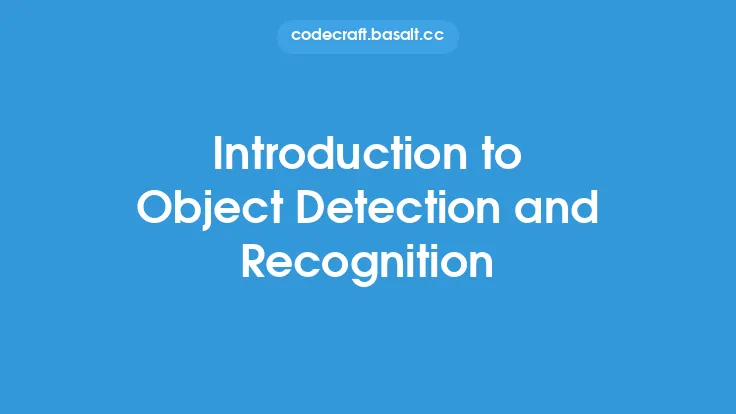Named Entity Recognition (NER) is a fundamental concept in Natural Language Processing (NLP) that involves identifying and categorizing named entities in unstructured text into predefined categories. These categories can include names of people, organizations, locations, dates, times, and other relevant information. The goal of NER is to extract and classify these entities, enabling computers to understand the meaning and context of the text.
What is Named Entity Recognition?
Named Entity Recognition is a subtask of information extraction, which is a broader field of research in NLP. The process of NER involves analyzing text to identify named entities and then classifying them into categories such as person, organization, location, and so on. This is a challenging task, as the same word or phrase can have different meanings depending on the context in which it is used. For example, the word "bank" can refer to a financial institution or the side of a river.
Types of Named Entities
There are several types of named entities that can be identified and classified using NER. These include:
- Person: Names of individuals, such as "John Smith" or "Jane Doe".
- Organization: Names of companies, institutions, and other organizations, such as "Google" or "Harvard University".
- Location: Names of cities, countries, states, and other geographic locations, such as "New York" or "California".
- Date: Dates and times, such as "January 1, 2020" or "12:00 PM".
- Time: Times of day, such as "morning" or "afternoon".
- Event: Names of events, such as "World Cup" or "Olympics".
- Product: Names of products, such as "iPhone" or "Toyota Camry".
Approaches to Named Entity Recognition
There are several approaches to NER, including:
- Rule-based approach: This approach uses hand-coded rules to identify and classify named entities.
- Machine learning approach: This approach uses machine learning algorithms to train models on labeled data and then apply these models to new, unseen data.
- Hybrid approach: This approach combines the rule-based and machine learning approaches to achieve better results.
Machine Learning Algorithms for Named Entity Recognition
Several machine learning algorithms can be used for NER, including:
- Conditional Random Fields (CRFs): CRFs are a type of discriminative model that can be used for sequence labeling tasks, such as NER.
- Support Vector Machines (SVMs): SVMs are a type of supervised learning algorithm that can be used for classification tasks, including NER.
- Recurrent Neural Networks (RNNs): RNNs are a type of neural network that can be used for sequence labeling tasks, such as NER.
- Convolutional Neural Networks (CNNs): CNNs are a type of neural network that can be used for image classification tasks, but can also be applied to NER tasks.
Applications of Named Entity Recognition
NER has a wide range of applications in NLP, including:
- Information extraction: NER can be used to extract relevant information from unstructured text, such as names of people, organizations, and locations.
- Text classification: NER can be used to classify text into categories, such as spam vs. non-spam emails.
- Sentiment analysis: NER can be used to identify the sentiment of text, such as positive or negative reviews.
- Question answering: NER can be used to identify the entities mentioned in a question and then provide relevant answers.
- Text summarization: NER can be used to identify the key entities mentioned in a document and then generate a summary of the text.
Challenges in Named Entity Recognition
Despite the importance of NER, there are several challenges that make it a difficult task. These include:
- Ambiguity: The same word or phrase can have different meanings depending on the context in which it is used.
- Context: The meaning of a word or phrase can depend on the context in which it is used.
- Language: NER can be language-dependent, and different languages can have different grammatical structures and vocabulary.
- Domain: NER can be domain-dependent, and different domains can have different terminology and concepts.
Future Directions in Named Entity Recognition
There are several future directions in NER, including:
- Deep learning: The use of deep learning algorithms, such as RNNs and CNNs, to improve the accuracy of NER models.
- Multilingual NER: The development of NER models that can handle multiple languages and scripts.
- Domain adaptation: The development of NER models that can adapt to different domains and terminology.
- Active learning: The use of active learning techniques to select the most informative samples for annotation and improve the accuracy of NER models.
Conclusion
Named Entity Recognition is a fundamental concept in NLP that involves identifying and categorizing named entities in unstructured text. It has a wide range of applications in NLP, including information extraction, text classification, sentiment analysis, question answering, and text summarization. Despite the challenges in NER, there are several approaches and machine learning algorithms that can be used to improve the accuracy of NER models. Future directions in NER include the use of deep learning algorithms, multilingual NER, domain adaptation, and active learning.





